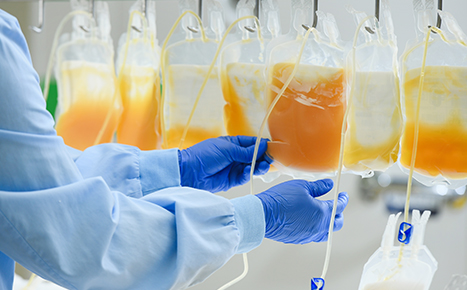
Plasma is the largest component of human blood, accounting for more than half of its total volume. This pale, straw-colored liquid serves as a vital transport system, carrying nutrients, hormones, proteins, and waste products throughout the body. It is also responsible for maintaining proper blood pressure and volume, ensuring that the circulatory system functions effectively. When people ask what is plasma used for, they are often surprised to learn how many critical roles it plays in both everyday health and advanced medical treatments.
Unlike red or white blood cells, plasma may appear less visible in discussions about health, yet its importance is undeniable. Without plasma, the body would not be able to distribute essential elements to tissues, regulate chemical balance, or fight infections effectively. Its natural role in clotting and immunity makes it central not only to survival but also to recovery from injuries and diseases. Because of these qualities, plasma has become a powerful tool in modern medicine, with countless therapies and treatments relying on its components.
Plasma-Derived Therapies and Treatments
When understanding what is plasma used for, one of the most significant applications lies in creating life-saving therapies. Plasma contains proteins, antibodies, and clotting factors that can be separated and purified into treatments for a wide variety of conditions. These therapies are often given to patients whose bodies cannot produce the necessary elements on their own.
Individuals with immune deficiencies rely heavily on plasma-derived immunoglobulins, which provide the antibodies they lack to fight off infections. People living with hemophilia and other bleeding disorders benefit from plasma-based clotting factor concentrates, which help control and prevent dangerous bleeding episodes. For burn victims and trauma patients, plasma transfusions replace lost blood volume and stabilize circulation, giving the body the chance to heal.
Beyond emergencies, plasma also plays a role in chronic care. Patients undergoing chemotherapy, organ transplants, or treatment for liver disease often require plasma therapies to strengthen their systems and support recovery. Each donation of plasma contributes to this pool of treatments, highlighting why plasma donors are essential to the healthcare system.
Expanding Research Into New Uses for Plasma
The scope of what plasma is used for continues to grow as medical research advances. Scientists are exploring new ways to harness its unique properties for conditions once considered untreatable. Plasma-derived products are being studied for their potential in treating neurological disorders such as Alzheimer’s and Parkinson’s disease, where certain proteins may help slow progression or support brain function.
Respiratory illnesses and autoimmune conditions are also areas of active investigation. Researchers are examining how plasma therapies might reduce inflammation, regulate immune responses, and improve overall patient outcomes. These experimental treatments represent the future of plasma medicine, offering hope to those who currently have limited treatment options.
Why Plasma Cannot Be Manufactured
One of the defining aspects of plasma is that it cannot be created in a laboratory. Its composition is far too complex for science to replicate artificially. Every vial of plasma used in treatments comes directly from donors, making plasma donation critical. This dependence on real human contributions makes plasma one of the most valuable natural resources in medicine.
Because of its irreplaceable nature, plasma donations are encouraged worldwide. Unlike whole blood donations, plasma can be given more frequently, making it possible for regular donors to contribute consistently. Each session adds to a supply that is transformed into therapies with global reach, benefiting patients far beyond the community where the donation occurred.
Plasma’s Global Importance in Healthcare
When examining what plasma is used for beyond local communities, the impact becomes even more profound. Plasma therapies are distributed across countries and continents, forming part of a worldwide network of care. Patients with rare diseases in one country may rely on plasma collected thousands of miles away. This interconnected system ensures that lifesaving treatments are available to those who need them, regardless of location.
Global demand for plasma continues to rise, driven by the growing recognition of its therapeutic value. Conditions that were once considered untreatable are now managed with plasma-based medicines, giving patients longer and healthier lives. For healthcare systems, maintaining a reliable supply of plasma is as important as securing access to other critical resources.
What makes plasma particularly valuable is its versatility. Unlike many treatments that are specific to a single illness, plasma can be applied to numerous conditions, both acute and chronic. Its shelf life, which extends up to a year when frozen, allows healthcare providers to store it for future needs, ensuring that it is available during crises such as natural disasters, pandemics, or mass trauma events.
Plasma’s story is one of resilience, connection, and scientific progress. From supporting daily functions in the human body to forming the basis of advanced therapies, plasma continues to demonstrate its irreplaceable value in medicine. Each discovery about its potential adds another chapter to its significance, reminding us that something as seemingly ordinary as a clear liquid in the bloodstream can hold the key to extraordinary healing.




More Stories
Tiny Bottle, Big Gains: Why 5-hour Energy SPORT Is the Gym Bag Gamechanger
Yoga Tips for Beginners Made Simple
Unlock Vitality Through Power Yoga